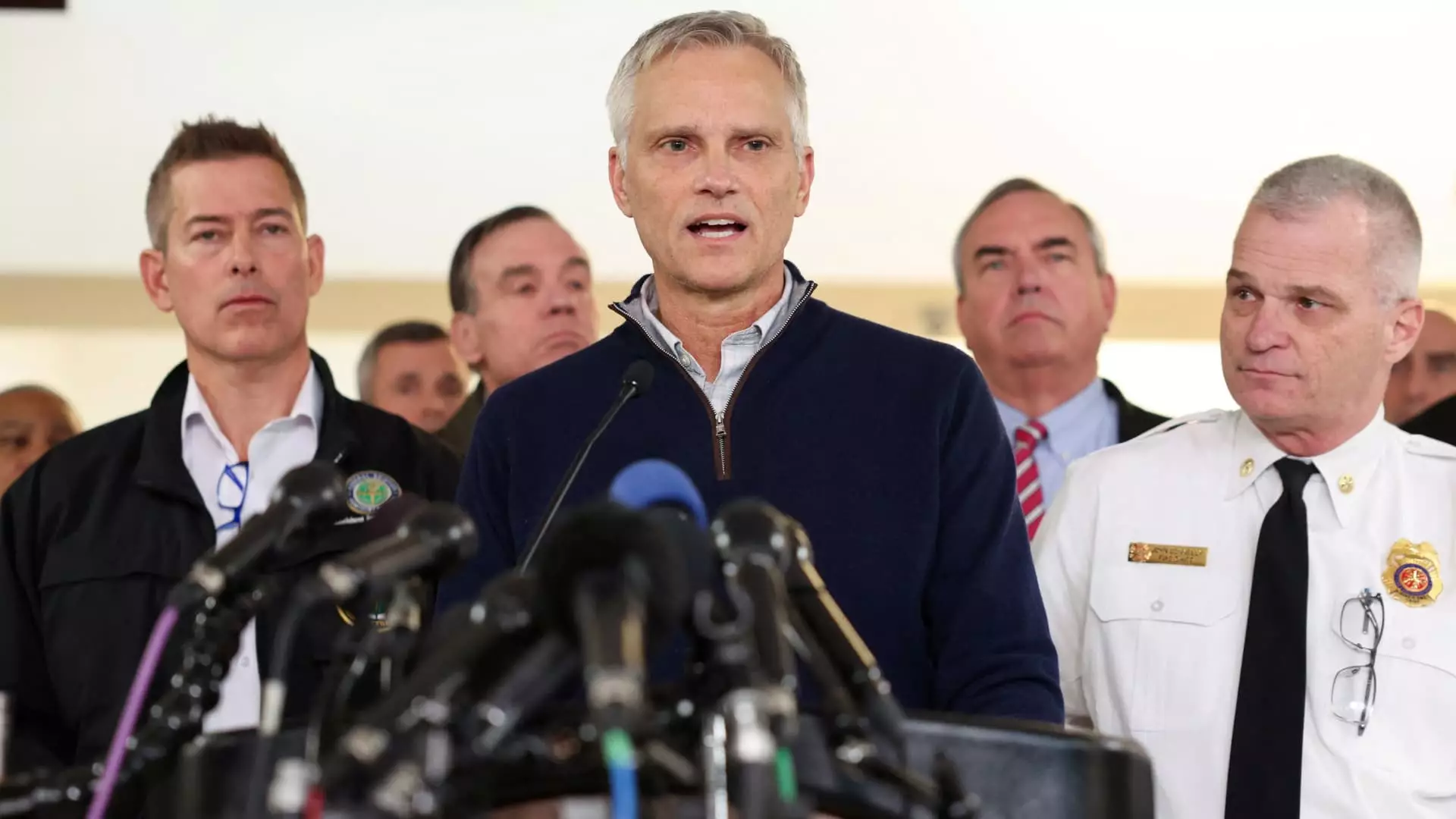On a fateful evening near Arlington, Virginia, a devastating collision transpired between an American Eagle regional jet and a Black Hawk military helicopter, leading to a catastrophic scenario that has left many mourning. The incident, which occurred around 9 p.m. Wednesday, has raised numerous questions concerning air traffic protocols and safety measures in densely populated airspace like that surrounding Washington, D.C. This tragic event highlights the ongoing complexities and potential dangers that arise within the aviation sector, especially amidst busy aerial environments.
American Airlines’ CEO, Robert Isom, provided initial insights during a press conference, clarifying that the regional jet was operating within a normal flight path when it collided with the military aircraft. While he expressed deep sympathy for the families of those involved, his statements also revealed the nervous juxtaposition of commercial flights co-existing with military operations. Transportation Secretary Sean Duffy echoed Isom’s sentiments, emphasizing the unusual nature of aircraft collisions, despite the complexities of air traffic in the Washington, D.C. area. The situation called for a comprehensive examination of existing protocols and collaboration between commercial and military flight routes to avert such tragedies in the future.
As the investigation unfolds, American Airlines has activated a care team to support the grieving families of the 64 people onboard, comprising 60 passengers and four crew members. Among those aboard were notable figures, including elite figure skaters returning from a training camp, adding a layer of poignancy to the tragedy. Their unexpected loss signifies not just a personal impact but a broader cultural one, considering the athletes’ contributions to the world of sports. Isom’s visit to the crash site illustrates American Airlines’ commitment to aiding families and managing the crisis effectively.
Moreover, the airline’s deployment of a “go team” to provide immediate assistance underscores the importance of swift action during crises, ensuring that families receive necessary information and emotional support. As the wreckage was recovered from the Potomac River, the push for empathy in the operational response was palpable.
With the National Transportation Safety Board taking charge of the investigation, questions surrounding the circumstances of the collision are rapidly mounting. Isom mentioned the impossibility of answering all inquiries at this preliminary stage, suggesting complexities in unraveling the series of events leading up to the crash. The collaboration between American Airlines and federal authorities will be crucial for understanding how and why this incident occurred, and what can be done to prevent similar events in the future.
The tragic collision between an American Eagle flight and a Black Hawk military helicopter has ignited significant concerns about aviation safety, air traffic protocols, and the emotional toll such incidents take on families and communities. As the investigation begins, it stands as a sobering reminder of the fragility of life and the need for ongoing improvements in air traffic management and safety measures.

